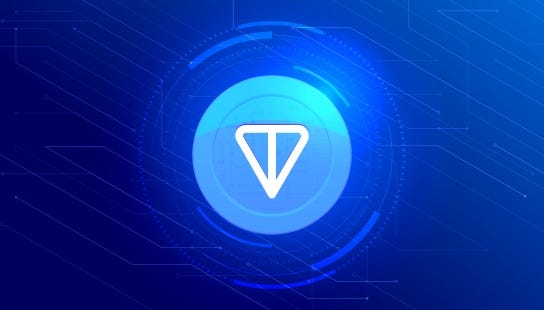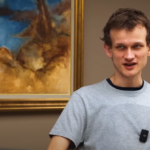In a remarkable event that has taken the blockchain world by storm, the TON Foundation recently held its largest and most ambitious hackathon to date. The Open League Hackathon, as it was called, wasn’t just another tech competition; it was a gathering of some of the brightest minds in the blockchain space, all vying to push the boundaries of what’s possible in the TON ecosystem.
From GameFi and DeFi to Social Web3, this hackathon showcased a dizzying array of innovative solutions that promise to reshape the future of blockchain technology. In this article, we’ll take a deep dive into the event, explore the groundbreaking projects that emerged as winners, and examine what this means for the TON ecosystem moving forward.
A Glimpse Into the Hackathon’s Scale and Ambition
If there’s one thing that became abundantly clear during the Open League Hackathon, it’s that the TON Foundation is dead serious about fostering innovation. With over $2.28 million in total prize money and a staggering number of participants, this hackathon wasn’t just a test of skill—it was a showcase of how far the TON community has come.
The hackathon saw hundreds of developers, designers, and entrepreneurs from around the globe band together in teams, all eager to contribute to the next big thing in blockchain. But this wasn’t just about the money; it was about creating real, tangible solutions that could be implemented in the TON ecosystem. The competition was fierce, the stakes were high, and the results were nothing short of extraordinary.
GameFi & Onboarding: The Winners Who Gamified the Future
When it comes to blockchain, GameFi is quickly becoming one of the most exciting sectors. The intersection of gaming and decentralized finance is creating new opportunities for both gamers and investors alike. The TON Foundation clearly recognizes this potential, which is why GameFi was one of the key categories in the hackathon.
1. Cat Gold Miner: Digging for More Than Just Gold
Taking the top spot in the GameFi & Onboarding category was Cat Gold Miner. This game isn’t just about mining gold—it’s about mining value. In Cat Gold Miner, players take on the role of a miner cat, digging through various layers of a blockchain-inspired world to unearth treasures, NFTs, and in-game assets. What makes this game truly innovative is its integration of DeFi elements, allowing players to stake their rewards, earn interest, and even trade assets on the open market.
2. Chick Coop: Where Eggs Meet Blockchain
Next up is Chick Coop, a game that’s as quirky as it is ingenious. In this game, players manage a virtual chicken coop, where the goal is to hatch eggs that can either be sold, traded, or used to create new NFTs. What’s fascinating about Chick Coop is its focus on onboarding new users to the TON ecosystem. By gamifying the onboarding process, Chick Coop makes it easier for users who are new to blockchain to understand and engage with the technology.
3. Hamsterdam: A DeFi Wonderland
Rounding out the top three is Hamsterdam, a game that blends the whimsical with the technical. In Hamsterdam, players control hamsters that navigate a decentralized financial landscape. The game features an intricate system of DeFi mechanics, where players can borrow, lend, and trade within the game’s economy. Hamsterdam not only entertains but also educates players on the complexities of DeFi, making it a perfect entry point for those looking to dip their toes into the world of decentralized finance.
Social Web3: Redefining Connectivity in the Decentralized World
The future of social media is decentralized, and the TON Foundation is at the forefront of this revolution. The Social Web3 category of the hackathon attracted projects that aimed to rethink how we connect, share, and interact online.
1. Boosteam: Supercharging Decentralized Communities
The winner in this category, Boosteam, is a platform designed to supercharge decentralized communities. It offers tools for community management, content creation, and engagement, all within a blockchain-powered ecosystem. What sets Boosteam apart is its focus on scalability and user experience. By making it easier for communities to organize and thrive, Boosteam is paving the way for the next generation of social networks.
2. Overleap: A New Era of Content Creation
Coming in second is Overleap, a platform that’s all about empowering content creators in the Web3 space. Overleap allows creators to mint their content as NFTs, giving them full ownership and control over their work. The platform also integrates a decentralized marketplace, where creators can sell their NFTs directly to fans and collectors. Overleap is a game-changer for artists, writers, and musicians who are looking for new ways to monetize their work in the digital age.
3. Tontch: Decentralizing the Social Experience
Tontch is another standout project in the Social Web3 category. This platform is designed to be a fully decentralized social network, where users own their data and have full control over their interactions. Tontch offers a suite of tools for creating and sharing content, connecting with others, and building communities—all without the need for a central authority. By putting users in the driver’s seat, Tontch is challenging the traditional models of social media and offering a new way to connect in the digital world.
DeFi: The Backbone of the Blockchain Revolution
DeFi, or decentralized finance, has been one of the most transformative sectors in the blockchain industry. The TON Foundation recognized the importance of DeFi by dedicating a significant portion of the hackathon to this category. The winning projects in DeFi are not only innovative but also have the potential to reshape the financial landscape.
1. SettleTON: Simplifying DeFi Settlements
SettleTON took the top spot in the DeFi category with a solution that aims to simplify the settlement process in decentralized finance. SettleTON offers a platform that automates the settlement of smart contracts, reducing the time and complexity involved in DeFi transactions. By streamlining this process, SettleTON makes it easier for users to engage with DeFi, whether they’re seasoned traders or newcomers to the space.
2. TON Hedge: A New Way to Manage Risk
Second place went to TON Hedge, a platform that provides users with new tools for managing risk in the DeFi space. TON Hedge offers a range of financial products, including options, futures, and swaps, all designed to help users hedge against volatility in the cryptocurrency market. With TON Hedge, users can protect their investments while still participating in the high-growth potential of the DeFi sector.
3. Curdle Protocol: Revolutionizing Liquidity Pools
Rounding out the DeFi winners is Curdle Protocol, a project that aims to revolutionize how liquidity pools operate. Curdle Protocol offers a new approach to liquidity provision, where users can create custom liquidity pools that are optimized for specific assets and trading pairs. This allows for more efficient and profitable trading, as users can tailor their liquidity pools to meet their specific needs. Curdle Protocol is poised to become a major player in the DeFi space, offering new opportunities for both traders and liquidity providers.
What This Means for the TON Ecosystem
The Open League Hackathon wasn’t just a competition; it was a statement. The projects that emerged as winners are more than just innovative—they are the building blocks of the future TON ecosystem. By fostering innovation across GameFi, Social Web3, and DeFi, the TON Foundation is positioning itself as a leader in the blockchain space.
But what does this mean for the average user? For one, it means that the TON ecosystem is about to get a whole lot more exciting. Whether you’re a gamer looking to earn while you play, a content creator looking for new ways to monetize your work, or a DeFi enthusiast looking to simplify your transactions, there’s something for everyone in the TON ecosystem.
Moreover, the success of the Open League Hackathon sends a clear message to the broader blockchain community: the TON Foundation is committed to pushing the boundaries of what’s possible. By investing in innovation and supporting the development of new projects, the TON Foundation is not only ensuring its own success but also contributing to the growth and maturity of the entire blockchain industry.
Conclusion
The TON Foundation’s Open League Hackathon has set a new standard for what a blockchain hackathon can achieve. With groundbreaking projects emerging in GameFi, Social Web3, and DeFi, the future of the TON ecosystem looks brighter than ever. As these projects continue to develop and roll out to the public, we can expect to see the TON ecosystem grow and thrive in ways we never thought possible. Whether you’re a developer, a user, or just someone who’s interested in the future of blockchain, now is the time to pay attention to what’s happening in the TON ecosystem. The future is being built right now, and it’s going to be incredible.
FAQs
1. What is the TON Foundation?
The TON Foundation is a nonprofit organization dedicated to the development and promotion of the TON (The Open Network) blockchain. It aims to create a decentralized and secure internet, enabling people to interact freely and safely online.
2. What is GameFi?
GameFi refers to the combination of gaming and decentralized finance (DeFi). It allows players to earn cryptocurrency and other digital assets while playing games, creating a new economy within the gaming industry.
3. How does TON Hedge work?
TON Hedge is a DeFi platform that provides tools for managing risk in the cryptocurrency market. It offers products like options and futures, allowing users to hedge against market volatility.
4. What is Social Web3?
Social Web3 is a new approach to social media that lever





